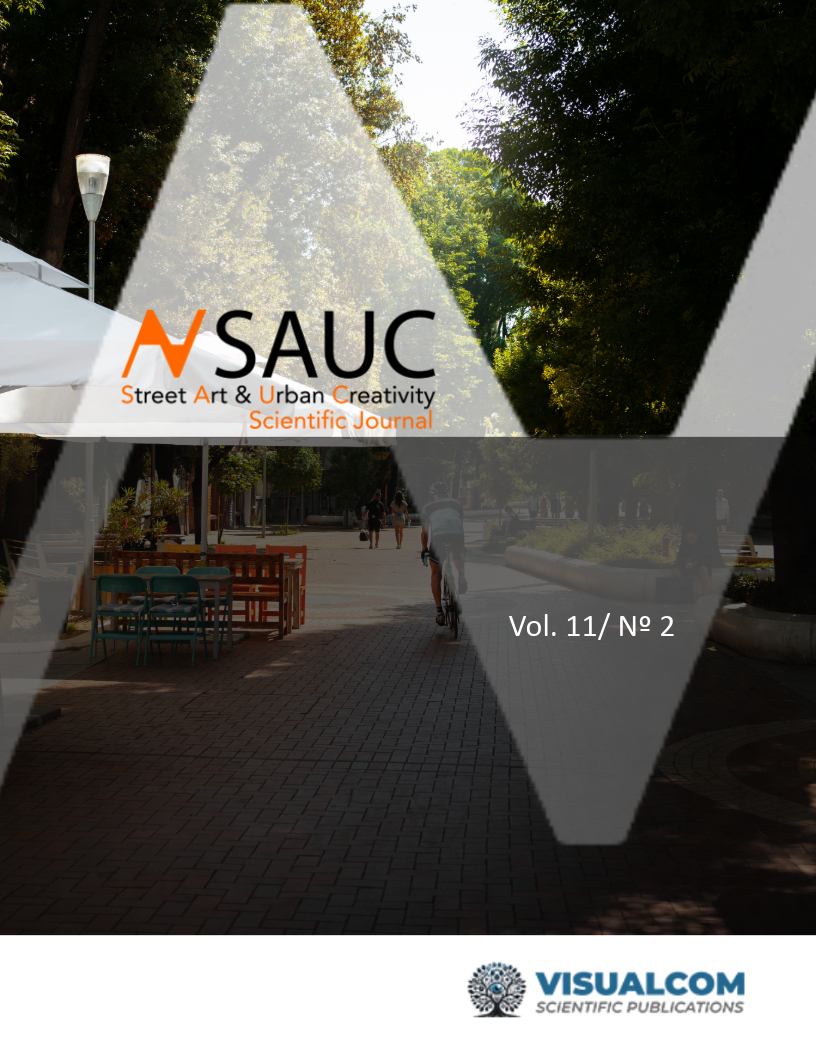The Origins of Mass Communication
The Modern Advertising Poster in the Cities of France and Italy
DOI:
https://doi.org/10.62161/sauc.v11.5645Keywords:
Advertising poster, Graphic design, Art Nouveau, Liberty Style, History of advertising, Belle Époque, LithographyAbstract
Advertising posters emerged in the late 19th century and became the primary mass communication medium until World War I. This paper contextualizes and justifies their cultural impact in France and Italy as primary centers of artistic poster design. It analyzes the socioeconomic, technological, and artistic factors that fueled the rise of posters as a mass medium, as well as the works of the most important poster designers in both countries. The findings show that these posters coherently reflected the profound transformations of the time. The leading poster designers, selected for their popularity—Chéret, Mucha, Toulouse-Lautrec, Dudovich, Cappiello, and Hohenstein—created works of great artistic value that far exceeded the ephemeral nature of the medium. These posters not only transformed the urban landscape but also left a lasting mark on the collective memory, one that endures over 100 years later.
Downloads
Global Statistics ℹ️
|
478
Views
|
325
Downloads
|
|
803
Total
|
|
References
Abruzzese, A. (1988). Archeologie dell’immaginario. Segmenti dell’industria culturale tra ‘800 e ‘900. Liguori Editore.
Bartolozzi, L., y del Mar, M. (2015). El cartel publicitario, instrumento de creatividad artística (algunos trazos entre la "Belle époque" y los años 60 del siglo XX). Artigrama, (30), 57-78. https://doi.org/10.26754/ojs_artigrama/artigrama.2015308095 DOI: https://doi.org/10.26754/ojs_artigrama/artigrama.2015308095
Bueno Doral, T. (2012). Estereotipos de género en los orígenes de la publicidad: la imagen femenina en el cartel artístico [Tesis doctoral, Universidad Complutense de Madrid]. Docta Complutense. https://hdl.handle.net/20.500.14352/48186
Berardinelli, A, Piccioli, G y Girolamo, C. (1985). La cultura del 900. Siglo Veintiuno.
Bossaglia, R. (1997). Il Liberty in Italia. Ed. Charta.
Checa, A., y Garrido, M. (2017). Teoría e historia del cartel publicitario. Editorial Síntesis.
Curci, R. (1976). Marcello Dudovich cartelonista. Edizioni della Casa de Risparmio.
Curci, R. (2002). Dudodvich. Oltre il manifesto. Ed. Charta.
De Fleury, M. (1888, 15 de septiembre). Le Figaro, supplément litteraire, Nº 37, p. 146147.
Felbinger, U. (1999). Toulouse-Lautrec. Könemann.
Fernández Martín, M. (2023). Carteles publicitarios en un archivo universitario: Fondo colección “Carlos Velasco” en el Archivo General de la Universidad Nacional de Educación a Distancia (UNED). RUIDERAe: Revista de Unidades de Información, 21, 1-10. https://revista.uclm.es/index.php/ruiderae/article/view/3394
Francia Ferrero, R. (2013). La editorial Ricordi y su aportación a la publicidad italiana de principios del siglo XX. [Tesis doctoral, Universidad Complutense de Madrid]. https://dialnet.unirioja.es/servlet/tesis?codigo=41536
Gallo, M. (1972). L´Affiche, miroir de l´histoire. Arnoldo Mondadori editore.
Gauthier-Villars, H. (1977). Cafés, bistrots et compagnie. Centre Georges Pompidou.
Grazioli, E. (2001). Arte e Pubblicità. Mondadori.
Gutiérrez Espada, L. (1998). El cartel Art Nouveau. Drac.
Gutiérrez Espada, L. (2000). El cartel publicitario (Desde sus inicios hasta la I Guerra Mundial). Editorial Complutense.
Le Men, S. (1998). Il 1848 in Europa. L’immagine alla Conquista dell’ubiquità. En Le rivoluzioni del 1848, L’Europa delle immagini tra storia e arte (p. 23). Associazione Torino Città Capitale Europea.
Morand, A. (1855). La vie de Paris, Paris.
Mugini, G. y Scudiero, M. (1997). Il manifesto publicitario italiano. Da Dudovich a Depero (1890-1940). Nuova Arti Grafiche Ricordi
Palazzolo, M.I. (2009). L‘editoria illustrata in Italia: modelli di produzione e di consumo tra Otto e Novecento. En Emporium. Parole e figure tra il 1895 e il 1964 (pp. 19-37). Edizioni della Normale.
Picone Petrusa, M. (1996). Vittorio Pica. Il manifesto. Arte e comunicazione nelle origini della pubblicità. Liguori Editore.
Rahat, R., Ijaz, A., Nadeem, L., y Arif, A. (2023). Tracing the Evolution: A Historical Inquiry into the Intersection of Art and Design. Traditional Journal of Humanities, Management, and Linguistics, 2(01), 28-38. https://ojs.traditionaljournaloflaw.com/index.php/TJHML
Rodrigo-Martín, L., Rodrigo-Martín, I., y Muñoz-Sastre, D. (2021). El cartel como documento publicitario en el primer tercio del siglo XX. Análisis del consumo, la sociedad y la cultura a través de la colección de carteles publicitarios de Carulla. Documentación de las ciencias de la información, 44, 221-229. https://doi.org/10.5209/dcin.73938 DOI: https://doi.org/10.5209/dcin.73938
Rodenbach, G. (1899). M. Jules Chéret. En L´ Élite: écrivains, orateurs sacrés, peintres, sculpteurs. Fasquelle.
Scudiero, M. (2002). Dudovich. Publicity & Print Press
Turi, G. (1997). Storia dell’editoria nell’Italia contemporánea. Ed. Giunti.
Vergani, G. (1990). Trent’anni e un secolo di Casa Campari. Ed. Arti Grafiche Amilcare Pizzi.
Weil, A. (2015). L’Affiche au temps de’l Art Nouveau. Éditions Hazan.
Downloads
Published
How to Cite
Issue
Section
License
Copyright (c) 2025 Street Art & Urban Creativity

This work is licensed under a Creative Commons Attribution-NoDerivatives 4.0 International License.
Those authors who publish in this journal accept the following terms:
-
Authors retain copyright.
-
Authors transfer to the journal the right of first publication. The journal also owns the publishing rights.
-
All published contents are governed by an Attribution-NoDerivatives 4.0 International License.
Access the informative version and legal text of the license. By virtue of this, third parties are allowed to use what is published as long as they mention the authorship of the work and the first publication in this journal. If you transform the material, you may not distribute the modified work. -
Authors may make other independent and additional contractual arrangements for non-exclusive distribution of the version of the article published in this journal (e.g., inclusion in an institutional repository or publication in a book) as long as they clearly indicate that the work was first published in this journal.
- Authors are allowed and recommended to publish their work on the Internet (for example on institutional and personal websites), following the publication of, and referencing the journal, as this could lead to constructive exchanges and a more extensive and quick circulation of published works (see The Effect of Open Access).













